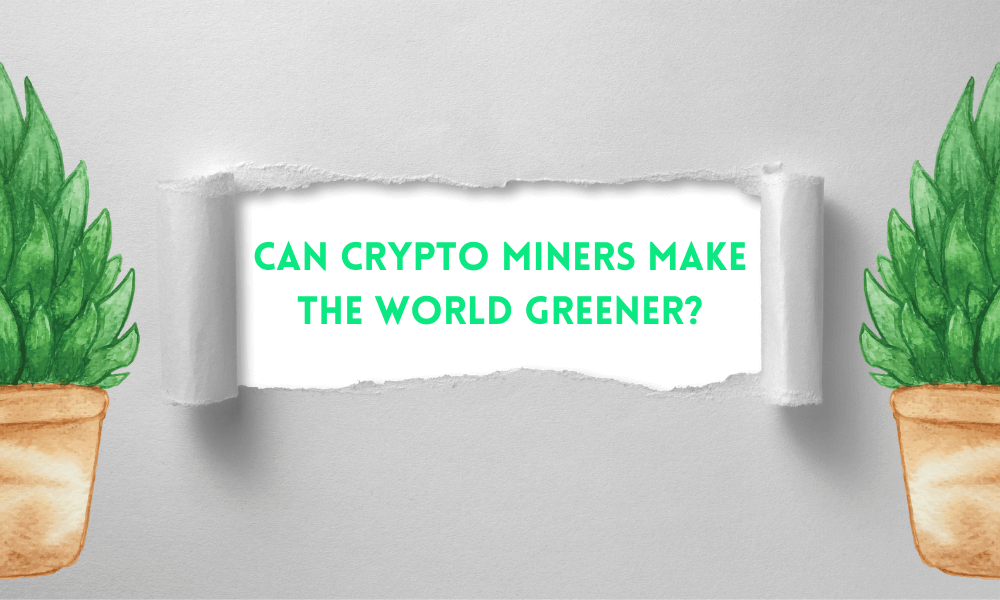Can Crypto Miners Make the World Greener?- PipsHunt
Around 15,000 cryptocurrency mining rigs are humming away at HIVE Blockchain’s 30 megawatts (MW) data center in Boden, Sweden. But not all the time. Sometimes, the facility powers down to help the local grid.
The data center, drawing cheap energy from local hydropower producers, acts as one of the largest, if not the largest, active energy reserves the Swedish grid can call upon whenever there are major disturbances to the local power supply.
The facility can shut down its machines almost instantaneously so that energy can quickly be diverted to public use.
“In five seconds, we have to power down half of what we have allowed into the system,” said Johanna Thornblad, HIVE Blockchain’s Sweden country president. “And within 30 seconds, the entire power supply that is being requested has to be participating in the FCR-D system”.
The Frequency Containment Reserve for Disturbances that keeps the lights on in the region.
When managed like that, the energy demand of HIVE’s mine is an asset to the local electricity grid; the miners are a stable source of cash flow when public energy consumption is low, but can power off during peak hours.
The mutually beneficial relationship between the HIVE facility and the local grid shows another side to the well-worn story of crypto mining’s environmental consequences.
A popular narrative among politicians, media, and the industry’s most vocal critics is that mining is cooking the Earth.
Miners have indeed been known to bring fossil fuel plants back from the twilight zone – thanks to their insatiable and indiscriminate thirst for cheap power.
Bitcoin is therefore said to be gobbling up the world’s precious energy and consequently responsible for a large number of carbon emissions.
“You cannot waste energy sustainably,” Pete Howson, a senior lecturer in the geography and environmental sciences department at the U.K.’s Northumbria University, told CoinDesk, aptly summarizing the critics’ view.
Globally, bitcoin mining alone consumes 136 terawatt-hours (TWh) per year, estimates the Cambridge University Center for Alternative Finance. That’s about the same amount of electricity as Argentina, the United Arab Emirates, or Sweden.
But that’s only about half of what data centers run for other purposes consume, which the International Energy Agency (IEA) puts at 200-250TWh.
U.S. and European lawmakers have been making arguments such as the ones mentioned above when scrutinizing the environmental impact of bitcoin mining.
Last week, proof-of-work mining, used by the Bitcoin network, narrowly escaped its demise in the European Union.
Lawmakers voted down a proposal that would have banned proof-of-work mining but made allowances for protocols such as Ethereum that were transitioning to other verification methods that consume less electricity, like proof-of-stake.
But concurrently with these criticisms, the bitcoin mining industry has shifted dramatically toward renewables.
Estimates of how much bitcoin mining is powered by renewables range from 40% to 75%, The New York Times reported in September 2021.
A report by crypto asset management firm CoinShares found that as of December 2021, renewables contributed under 30% of the total energy consumed by the bitcoin network, with nuclear power responsible for 11% of the total and natural gas contributing another 24%.
Although carbon emissions from mining have been growing overall, along with the industry, they have decreased relative to megawatt-hours of electricity used and terahashes of computing power produced, CoinShares found.
More than cleaning up its own act in the process of decarbonization, the crypto industry might help energy producers build more renewable energy than the rest of society can use.
Read More
Pro-Crypto Republican’s Push for Bill Gets Backing of a Democrat
El Salvador turns to Binance for help on Bitcoin Adoption
Ethereum is one step closer to solving a major criticism and beating Bitcoin
The Benefits of renewables for Crypto Miners
For many miners, using renewably sourced electricity makes a lot of economic sense. Overall, renewable energy is cheaper than fossil fuels, so it can preserve miners’ profit margins.
“Generally speaking, electricity from renewables is as competitive if not cheaper than fossil fuel-based electricity,” said Jesse Morris, CEO of Energy Web, a U.S. company that is helping a consortium of miners build transparency around their energy sources, known as the Crypto Climate Accord.
Not only are fossil fuels more expensive, but they are vulnerable to external price shocks, such as the war in Ukraine.
An interesting dynamic emerging from the conflict is that, with fossil fuel prices through the roof, renewable energy is even more attractive, said Mellerud. “We will likely see more miners moving towards renewables due to this shock.”
Howson, who studies the social and environmental impact of bitcoin mining, is skeptical of such arguments. The fact that renewable energy is not produced 24/7, 365 days a year, makes it less attractive to miners, he said.
“Every minute the sun’s not shining or the wind’s not blowing, or it’s the dry season so no hydro, they’re losing money,” he told CoinDesk.
Miners have another incentive to move toward cleaner energy sources: They can “lower their cost of capital since they have a better chance of attracting institutional investors that operate under ESG-mandates,” said Jaran Mellerud, a researcher at Oslo-based Arcane Research.
“Environmental, social, and governance” is a set of criteria for making investments that looks at social goals in addition to financial returns.
Companies, especially those traded on public markets, are under pressure to decarbonize, said John Belizaire, CEO of Soluna.
As miners went public, their energy consumption became public information, and “and as you might imagine, no company, especially in the public markets, is immune to ESG pressures.
We're all in the role at this point in the back of a Tesla moving in the right direction,” Belizaire said.
“Still, some miners will resort to buying carbon offsets as an easy solution, as some of them already do today,” Mellerud said. These are transferable credits for reducing emissions, which companies can sell on the market.
If a miner intending to be green joins the industry, fossil fuel-powered miners, such as players using coal in Kazakhstan, or gas-powered ones in Texas, are incentivized to increase their energy consumption to keep up, Howson said.
A growing way of using renewable energy to power mining is through what can be called behind-the-meter solutions.
That’s when an electricity producer connects a couple, or a couple thousand, mining rigs close to the energy asset, so the power goes directly to the miners, instead of going through the grid (and its meters).
 Day Trading 101 Day Trading 101  Can You Start Day Trading as a Beginner? |
No man’s Energy
A fair amount of the world’s renewable energy is stranded or curtailed, meaning it is located far from demand and there is no good way to transmit it to regions with high usage.
As a result, producers might turn off or limit their energy production.
California clocked 1.5 TWh of curtailed energy from wind and solar in 2021, according to the state’s grid operator.
In addition, a lot of energy dissipates when it is transmitted over long distances, so it makes economic sense to consume it where it is produced, said PoW Energy co-founder Alejandro de la Torre, whose company crypto builds mines around Europe.
For example, in northern Norway, electricity prices are about 10 times less than in the southern part of the country because there is abundant hydroelectric power but barely any industry or population to consume it.
“The energy production [in the north] and the potential for more production is so much higher than the local demand for that energy and the capacity to export it to other areas,” Kjetil Pettersen, CEO of Oslo-based miner Kryptovault, told CoinDesk.
However, countries around the world are working to develop better transmission lines such that energy can be consumed or exported. Germany will spend $55 billion on such projects by the end of 2030, estimates the Federal Ministry of Economic Affairs and Climate Action.
Thanks to the abundant hydroelectric energy, northern Norway, which is not directly connected to the rest of Europe, has been impervious to a sharp uptick in energy prices in the south of the country.
And doesn’t expect any increases soon, said Oleg Blinkov, head of data center development and operations at Bitfury, one of Europe’s e largest miners.
Kryptovault is considering establishing facilities there to soak up the excess energy.
The same is true for northern Sweden, where cheap, abundant energy has attracted everything from Facebook data centers to crypto mining operations to the region.
Bitcoin mining can act as a demand-side response to the problem of curtailed or stranded energy.
“The grid is having a real challenge integrating large amounts of power,” Belizaire said. Three things are needed to fix this problem; transmission capacity, flexible loads, and energy storage, he said.
The IEA estimates that another 500 gigawatts (GW) of demand responses need to be brought online by 2030 to achieve net-zero carbon emissions globally by 2050.
That’s a tenfold increase compared to the capacity of demand-side responses brought online in 2020. Demand responses try to balance the grid by increasing or reducing energy consumption to match the supply.
The next decade will be messy, Morris said. Power grids will become increasingly complicated as they integrate a growing array of energy sources. “It's gonna get worse before it gets better,” he said, adding that crypto mining should be a necessary part of the solutions available to energy suppliers.
Howson countered that overall, mining is encouraging fossil fuel energy production more than it is promoting renewable energy.
“For every farmer plugging a few ASICs into their biodigester, there’s an entire fossil fuel power plant reopening to satisfy bitcoin’s energy demands,” he said.
Trade groups who tout the former type of miner are simply engaging in ”a massive greenwashing drive,” he said.
Ultimately, the industry “is delaying grid transitions to renewables,” by making oil and gas industries more profitable, Howson said.
Increasing the proportion of wind and solar energy in the grid will increase the need for energy reserves that can be tapped on-demand, like HIVE’s Boden mine that can power on and off, Mellerud said.
“These energy sources are variable and not controllable, as they only generate power when the weather allows it,” he said.
In other words, the supply of energy becomes less flexible the more wind and solar are integrated into the grid, such that the demand side has to make up for the difference.
Another interesting model is that manufacturing facilities, such as clothing factories, can use any excess energy that they didn’t spend during the manufacturing process to power in-house bitcoin mines, de la Torre said. This is happening, for example, in Spain, he said.
- Yahoo Finance

















